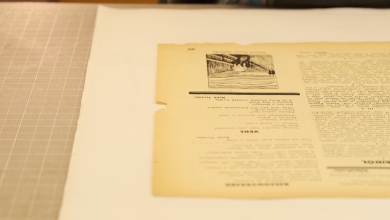A Body, a Family and the Woman Who Changed Everything

MERCURY, by Amy Jo Burns
We meet the main players of Amy Jo Burns’s poignant new novel, “Mercury,” in that golden moment between childhood and adulthood, when they’re young and strong, and it’s just dawning on them that their worlds were circumscribed at birth.
The story is set in Mercury, a down-at-the-heels town near Pittsburgh, and revolves around the Joseph family, the owners of a local roofing company. Mick, a volatile father of three, expects his sons to continue the business. His wife, Elise, is beloved around town if somewhat cold at home. She’s the glue who holds the family together.
In 1990, just a few weeks before the elder two Joseph sons are to begin their senior year of high school, the beautiful Marley and her mother blow “into Mercury in their teal Acura with the windows down and the radio blasting.” Not long after they arrive, two outfielders catch Marley’s eye at a baseball game: Baylor and Waylon Joseph, who have “V-shaped torsos and dark hair.” One taunts the other, they get into a brawl and Marley clambers “down the bleachers to climb the fence and force the brothers apart.”
With this single act, her fate is set. She becomes lover, mother, arbitrator, therapist and boss — every possible thing to the two boys and their younger brother, Shay.
Burns frames the novel around a gruesome discovery in the attic of the Presbyterian church: Summoned to fix a leaky roof, the brothers find a decomposed body hidden under old choir robes. Every narrative needs a situation as well as a story (see Vivian Gornick on this matter), and Burns proves the point. Her whodunit and motive feel unimportant and, at times, unnecessarily confusing. But “Mercury” is a character-driven novel; the point isn’t the plot, but what the people enacting it reveal about themselves.
Though the book covers only nine years, there’s something epic about the love story at its heart. And it is a love story, even if there’s little romance involved. The Josephs, Marley, maybe all the people of Mercury — none are terribly articulate about how they feel and what they want, so they express themselves by fighting, drinking and disappearing. We know early on that Marley marries Waylon Joseph while still in high school, but which brother Marley truly loves is one of many driving forces in this novel — a stronger one than the body in the attic. Another is the question of who deserves Marley’s loyalty.
Which brings me to Elise, the lone woman in the family before Marley comes along. In her pleated dresses and maroon pumps, Elise embodies the traditional role of supportive wife and mother. She doesn’t seem to like Marley very much, but she does recognize something in the young woman — a capacity for loyalty, perhaps, or the potential to be a successor.
But Marley is not Elise. She reflects, “The arc of a mother’s life shouldn’t have self-sacrifice as its inevitable pinnacle.”
For me, this idea sums up the defining difference between women now and so many of the ones who came before us: No, we will not lose our minds and identities in order to get dinner on the table and clean clothes into dresser drawers. No.
And so the most powerful tension in this novel doesn’t come from the dead body. It comes from the question of whether Marley will demand a place for herself — and for her voice to be heard.
Mary Beth Keane’s latest novel is “The Half Moon.”
MERCURY | By Amy Jo Burns | Celadon | 336 pp. | $29



